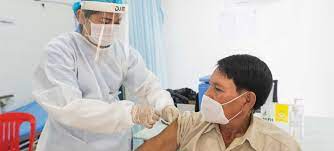A new, unidentified illness has surfaced in the northwestern Democratic Republic of the Congo (DRC), a nation already struggling with multiple public health and humanitarian crises, according to a report released by the World Health Organization (WHO) on Wednesday.
The WHO reported two clusters of cases and fatalities in Equateur Province, raising significant concerns among health officials. As of February 15, 431 cases and 45 deaths have been documented.
Rapidly Escalating Outbreak
The first cluster of cases was identified in January in Boloko Village, situated in the Bolomba Health Zone. Initial investigations suggest that the outbreak may have originated from three community deaths of children under five years old. The children reportedly exhibited symptoms such as fever, headache, diarrhea, and fatigue before their conditions deteriorated into hemorrhaging. Notably, local sources stated that the children had consumed a bat carcass before falling ill.
The second cluster emerged in February in Bomate Village, located in the Basankusu Health Zone. The outbreak in this area has demonstrated an alarming trajectory, with cases increasing sharply and nearly half of the deaths occurring within 48 hours of symptom onset.
“The outbreak, which has seen cases rise rapidly within days, poses a significant public health threat,” the WHO report emphasized. The Bolomba Health Zone has recorded an exceptionally high case fatality rate, compounding fears over the disease’s severity.
Investigating the Cause
Health authorities have yet to establish epidemiological links between the two affected health zones. However, experts are considering multiple potential causes, including malaria, viral hemorrhagic fevers, food or waterborne poisoning, typhoid fever, and meningitis. Notably, tests have ruled out Ebola and Marburg viruses, two of the deadliest hemorrhagic fevers known to impact the region.
Precedents and Challenges
This is not the first time an unexplained illness has emerged in the DRC. In late 2024, the southwestern province of Kwango faced a “mysterious disease” outbreak that was later identified as severe malaria compounded by malnutrition. That outbreak resulted in 2,774 cases and 77 deaths, according to a government report released in January 2025.
Further complicating the response to this new outbreak is the ongoing armed conflict in North Kivu and South Kivu provinces. Reports of looting, attacks on aid workers, and road blockages have hampered relief efforts, exacerbating an already dire humanitarian crisis.
Urgent Call for Action
The WHO has urged immediate action to secure humanitarian access, restore critical infrastructure, and ensure the delivery of medical and food aid to affected regions. Enhanced public health surveillance remains essential in preventing further escalation of the crisis.
As health officials work to determine the nature of this illness, local and international agencies continue to monitor the situation closely.
Disclaimer: This article is based on currently available reports and ongoing investigations. Further developments may alter the understanding of the outbreak as new information emerges.












